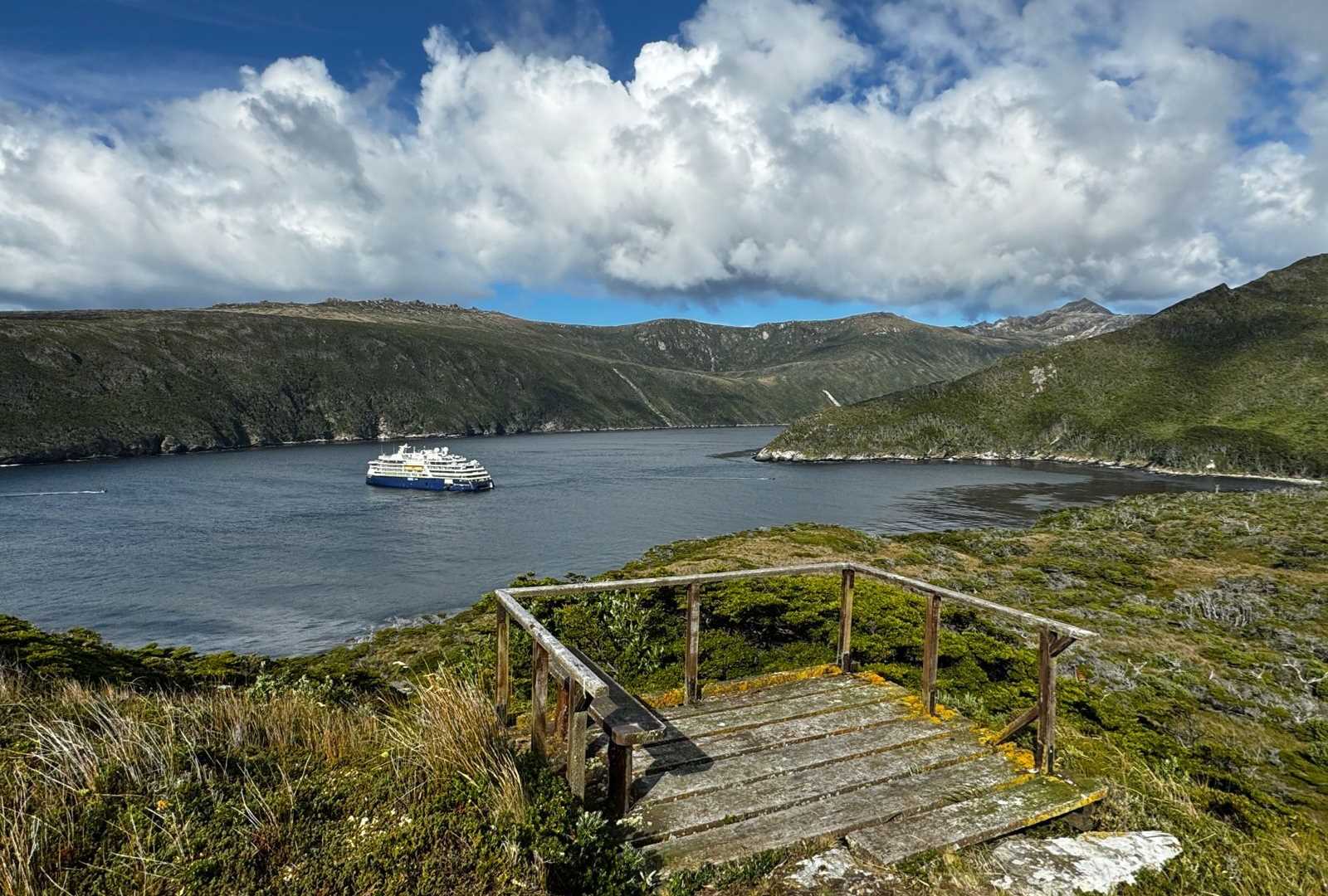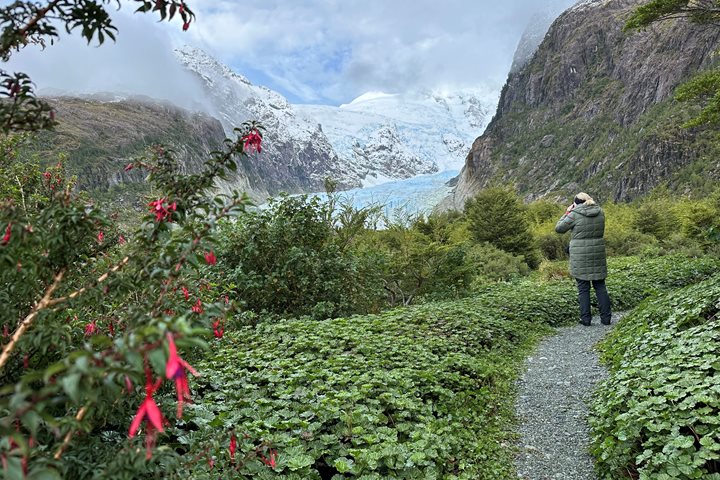This morning many of us hiked up to the infamous Lighthouse at the End of the World (Faro del Fin del Mundo). Made famous by the novelist Jules Verne, the repaired lighthouse gives some insight into how the prisoners (keepers of the lighthouse) spent their time. The hike also gave us a chance to enjoy the native plants of the island, including the most southerly growing tree: a beech in the Nothofagus family. South Atlantic fur seals were the highlight of the Zodiac tours in the area, and a few were lucky to spot either Magellanic or rockhopper penguins in the water before they darted out of sight.
We repositioned over lunch to the head of Puerto Cook, the narrowest point to hike across the island, from the pebbly beach on the north to the sandy beach of Puerto Vancouver on the south. Our path meandered through more native plants, with sea birds taking advantage of the low-lying shortcut over-head. Our Lindblad Expeditions-National Geographic fund representatives on board from Unplastify also led a beach clean-up to remove plastic trash that had washed up on the shore. We felt good leaving Isla De Los Estados better than we had found it.







